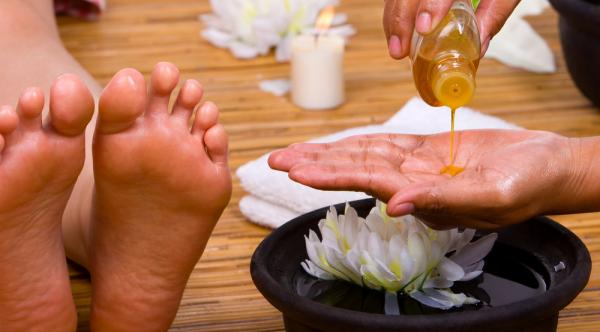Word Ritucharya is made up of two words – Ritu means seasons Charya means do’s and dont’s (regimen). This article discusses details of different seasons and the regimen to be followed.
Ritu means mausam or fixed time appointed for any action. A season (Ritu) is comprised of two months (two Masa). According to Seasonal Routines- Ritucharya is explained in Chapter 3rd of Ashtang Hridya, a year which is divided into two Kalas –
Aadaan kaal (Uttarayaan) (Northern Solstice)
Visarga kaal (Dakshinayaan) (Southern Solstice)
In Ayurveda literature, the year is divided into six seasons-

Shishira Ritu (winter, dewy season) – Magha and Phalguna (Mid-January – Mid March)
Vasanta Ritu (Spring season) – Chaitra and Vaishakha (Mid-March – Mid May)
Greeshma Ritu (Summer season) – Jyeshta and Ashadha (Mid May to Mid-July)
The above three Ritus form Uttarayana – Northern solstice. Here, fire is dominant. It is also called as Adana Kala, wherein the human strength is relatively low.
Varsha Ritu (rainy Season) – Shravana and Bhadrapada – Mid July – mid September
Sharad Ritu (autumn season) – Ashvayuja and Karthika – Mid September to Mid-November
Hemanta Ritu (winter season) – Margashira and Pushya – Mid November to Mid-January
These three seasons form Dakshinayana – Southern solstice. It is also called as Visarga Kala, wherein the human strength is relatively high.
Varsha(monsoon), Sharada(autumn), Hemanta(winter), Shishira(late winter), Grishma(summer) and Vasanta(spring). Each season consists of two months. Seasons are classified to eliminate the morbidity of doshas in the respective seasons.
Purpose of ritucharya:-

A balanced seasonal routine helps in attaining the equilibrium between the doshas. Stresses caused by changing seasons should be circumvented by following the seasonal routine as it is helpful in attuning the rhythm between the atmosphere and the person itself.
Enhancement in Digestive power
Hemant ritu falls during Margashira and Pushya i.e. Mid Nov to Mid Jan (winter season). During this season, digestive fire gets ignited and appetite increases consequently. Due to this activity, body easily digests guru aahar. The digestive activity becomes more potent, because it gets obstructed from flowing outwards due to external winter. Hence, Digestive fire causes emaciation of the body tissues in similar way as fuel engulfs the things that come into its contact.
Foodstuffs to be taken in Hemanta Ritu

1.One should consume foods which are madhura (sweet), amla (sour) and lavana (salty) in taste and are helpful in satisfying body’s metabolic desires and reducing vata.
2. Snigdh food should be consumed so as Jatharagni (digestive fire) does not start consuming body’s own energy.
3. Wheat, Gram flour products, milk products and corn (edible oils) should be consumed.
4. Articles prepared from freshly harvested corn should be taken as food.
5. Products of sugarcane like sugar and jaggery are beneficial for use.
6. Flesh of aquatic animals and that habitant in areas receiving heavy rainfall should be consumed.
7. Medicines should be taken with madhira, seedhu (products of molasses) and honey which acts as anupana (mediators).
8. In hemant ritu, the digestion power is high, heavy to digest foods such as meat soup mixed with fats; meat of well-nourished animals, wine prepared with jaggery and supernatant part of wine is digested efficiently.
Recommended Lifestyle practices :-
1. You should give your body abhyanga or oil massage every day. So after attending ablutions, you should resort to abhayanga (Oil massage) with oils having vata balancing properties, udvartan with fine paste/powder of kumkum (Kesar).

2. Apply hair oil to your head regularly. Massage should be done especially at scalp and forehead. Mild massaging is recommended. After this, oil is washed off with astringent powders. Then after, fine powder of saffron and Kasturi (musk) is applied.
3. Apply lepa or paste of agaru or Eaglewood (Botanical name: Aquillaria agallocha) to the body. It keeps the body warm.
4. Warm water should be used for ablutions.
5. Thick sheet made of cotton, leather, silk, wool or bark of trees that are light in weight should be used during sleep.
6. Do sunbathing. Exposure to sunlight and fire should be resorted judiciously; foot wear should be worn always.
7. Stay in warm and cozy places. Persons who spend their time residing in houses can keep themselves warm by bonfire.
Seasonal Influence on Human body
Tridoshas Vata, Pitta and Kapha are described as tristambha, basic humors of body, but accumulation, vitiation and pacification of vata, pita and kapha is caused in different seasons. Our diet, activities and routine have a direct impact on our health. The environment we live in and the changing seasons also affect our health. The doshas keep on changing according to the season. Hence, it is important to make some changes in our diet and lifestyle regimen according to the seasons. Following the respective Ritucharya , one can build its bodys immunity and check the adverse impact of seasonal changes on body. The following table illustrates the dosha activity in each season.
Ritu sandhi and its significance:-
Sandhi means conjunction. Here Ritu Sandhi is the period of the last 7 days of the present ritu and the first 7 days of the subsequent ritu. For instance, it is hemant ritu after which it will be shishir ritu .So Ritu sandhi will be the last seven days of hemant ritu and seven days of shishir. During ritu sandhi, the diet and regimen that is being followed should be stopped gradually and that of subsequent ritu to be followed.
By:
Dr.Nitika Saroch
BAMS, MD (Ayurveda)
Er. Aastha Mahajan
B.Tech (Biotechnology), M.B.A
